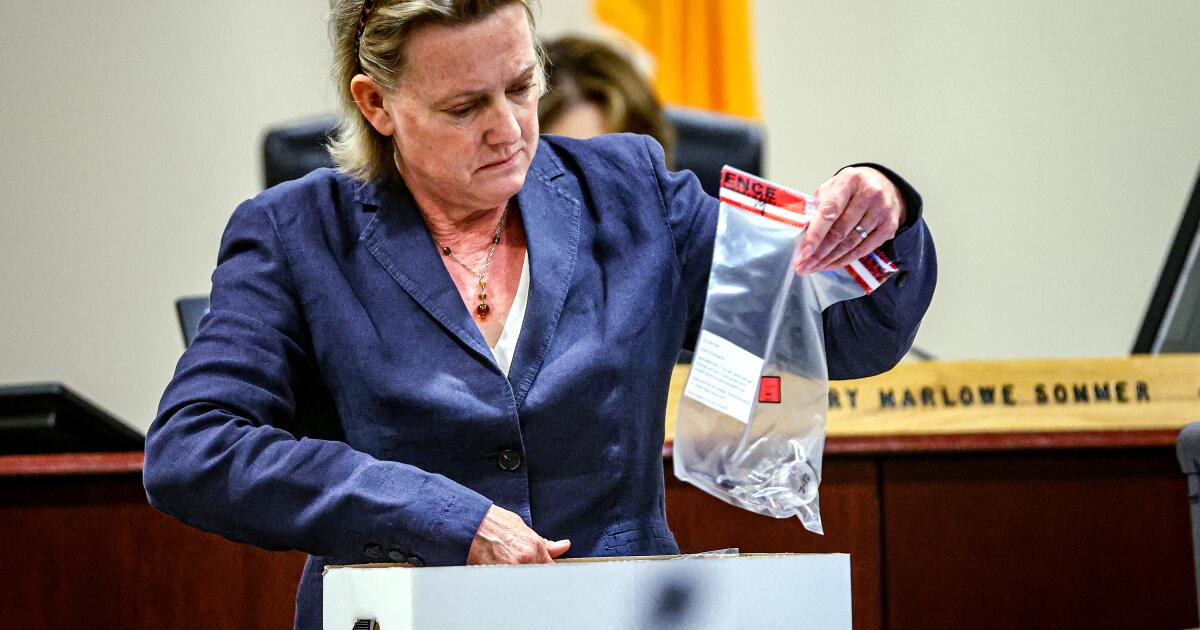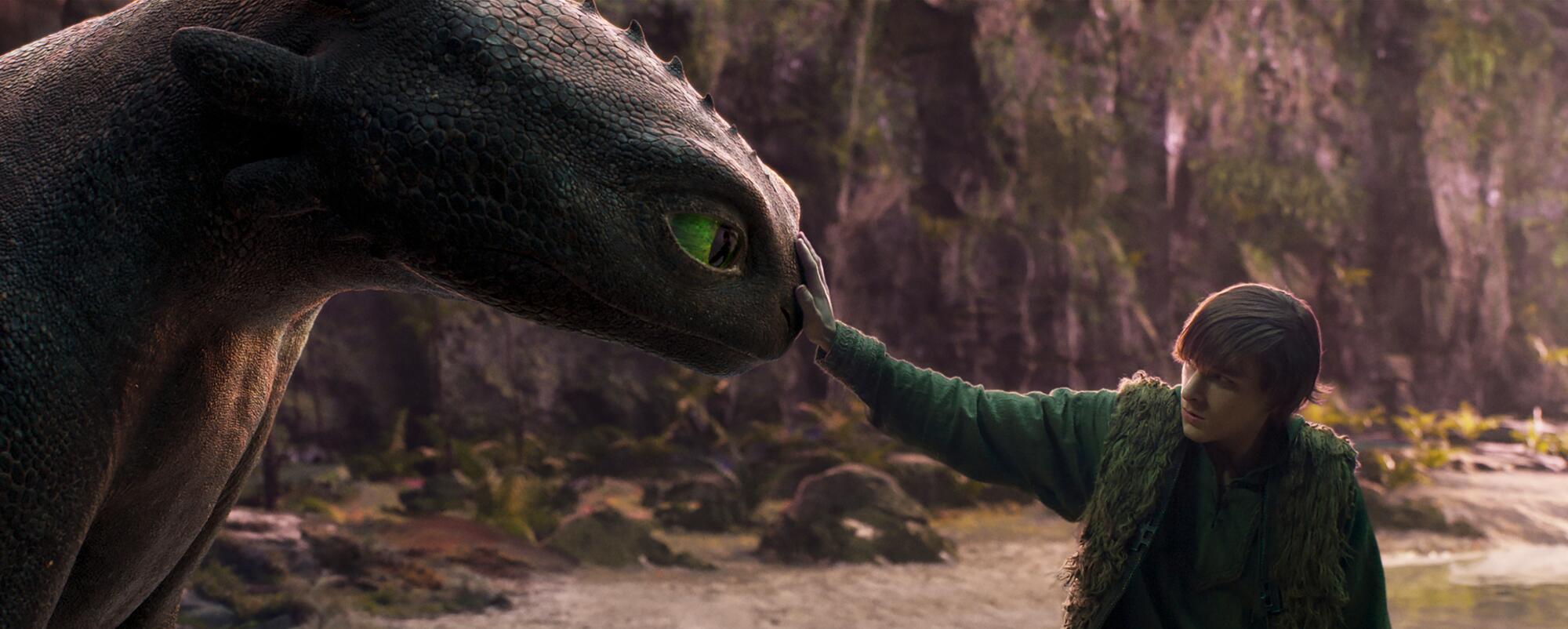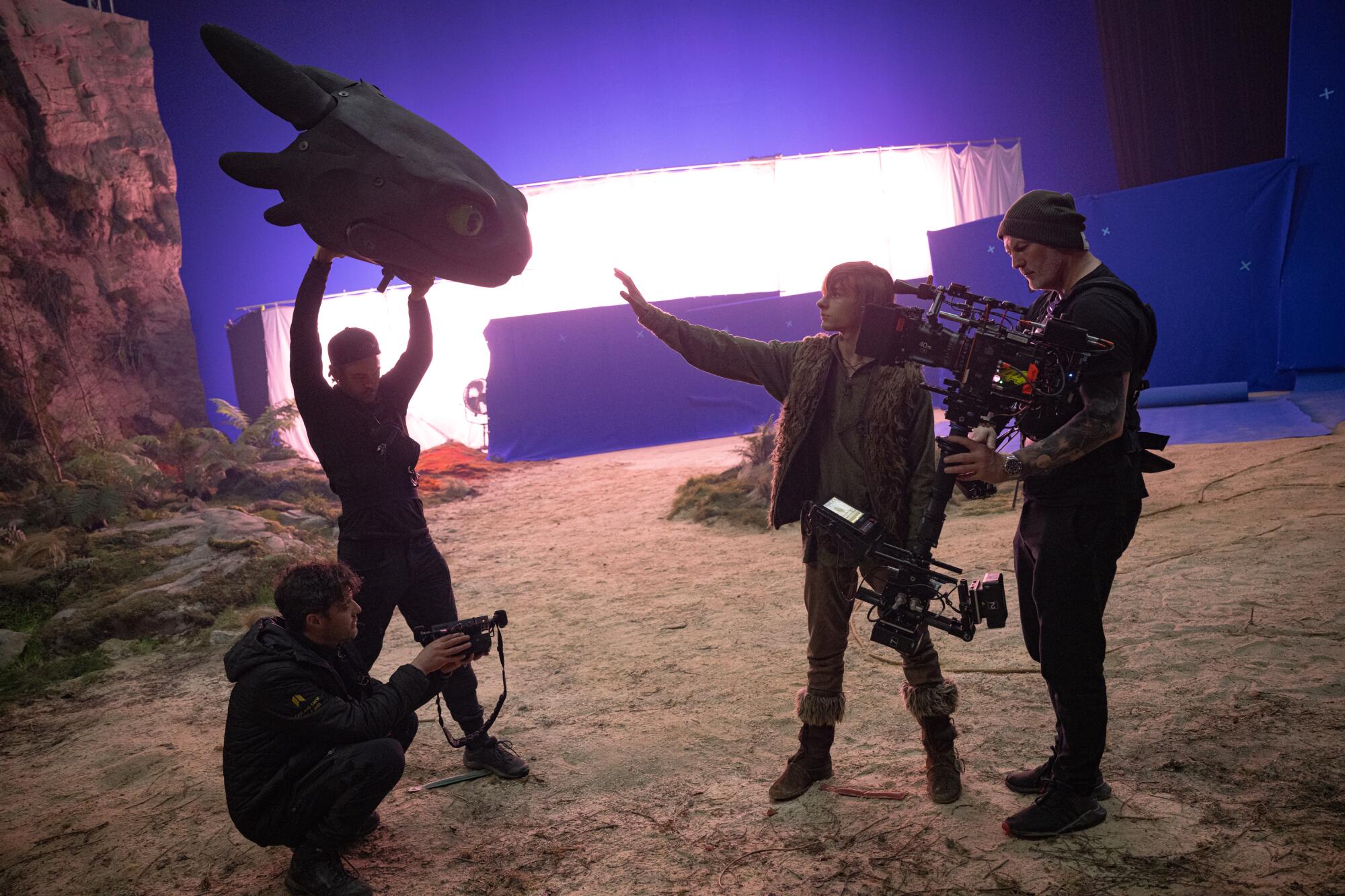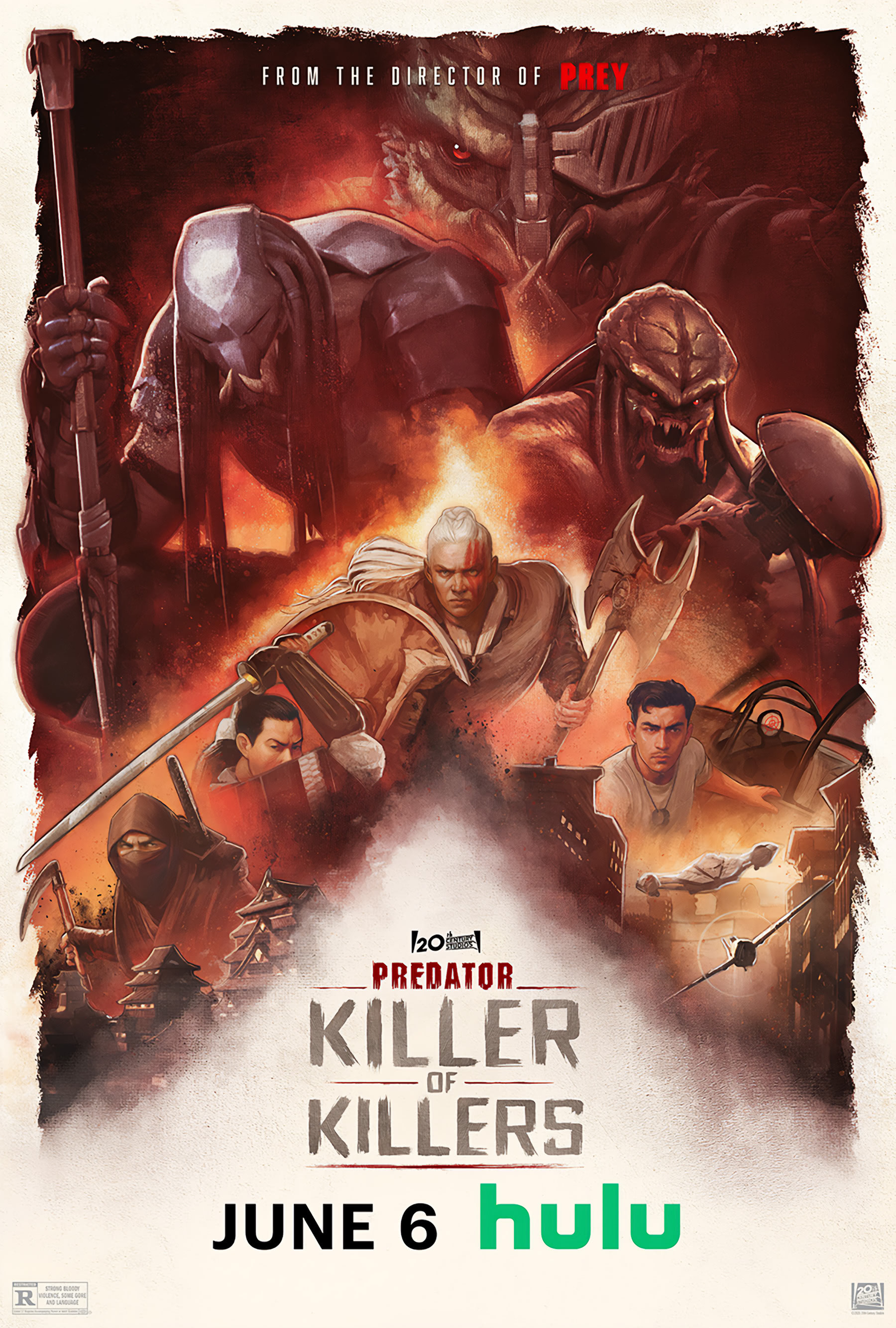Entertainment
'Rust' shooting prosecutor asks judge to reopen Alec Baldwin manslaughter case

Defending the state’s handling of the “Rust” shooting case, New Mexico special prosecutor Kari T. Morrissey has asked the judge to take another look at the circumstances that prompted the dismissal of Alec Baldwin’s manslaughter charge.
In a court filing Friday, Morrissey asked New Mexico First Judicial Circuit Court Judge Mary Marlowe Sommer to reconsider her decision to throw out Baldwin’s manslaughter case.
Six weeks ago, Marlowe Sommer dramatically ended Baldwin’s criminal trial after potential new evidence came to light. A former police officer who lives in Arizona had months earlier delivered nearly two dozen .45-caliber rounds to the Santa Fe County Sheriff’s Department, saying they might have been related to the “Rust” shooting 2½ years earlier that killed cinematographer Halyna Hutchins.
The former officer, Troy Teske, is a friend of Thell Reed, a noted Hollywood armorer and father of “Rust” weapons handler Hannah Gutierrez, who was convicted of involuntary manslaughter in March in the shooting. Teske was scheduled to be a witness in her trial but Gutierrez’s defense attorney decided not to call Teske to testify.
After the Gutierrez trial and before leaving Santa Fe, Teske turned over the ammunition he had brought to New Mexico to local sheriff’s deputies. The casings of three of the rounds appeared to match the fatal bullet in the “Rust” movie set shooting, deputies later testified.
During Baldwin’s trial, the Santa Fe County sheriff’s crime scene technician testified that she took the rounds from Teske and placed them into evidence storage. However, the rounds were not included as part of the “Rust” shooting evidence, later testimony showed.
Instead the ammunition was filed under a different case number — a fact that Baldwin’s attorneys pounced on as evidence that the state was allegedly hiding material that might have been helpful to Baldwin’s defense.
The judge agreed and dismissed the criminal charge.
Alec Baldwin, right, hugs his defense attorney Alex Spiro after District Court Judge Mary Marlowe Sommer threw out the involuntary manslaughter charge against the actor.
(Luis Sánchez Saturno / Associated Press)
In her 52-page motion, Morrissey argued that defense attorneys knew more about the Teske rounds than she did. She wrote the situation surrounding the rounds did not rise to a level that warranted Marlowe Sommer’s dismissal of the case with prejudice, meaning it could not be refiled.
Morrissey asserted that the tardy disclosure of the Teske rounds did not hamper Baldwin’s defense because his attorneys apparently knew about the ammunition before the trial. Morrissey also argued the rounds were unrelated to the charges that Baldwin faced.
“It never occurred to the State that the Teske rounds were relevant to the case against Mr. Baldwin and they are not,” Morrissey wrote.
A Baldwin representative was not immediately available for comment.
Morrissey wrote that the state, which had just two attorneys on the Baldwin case, lacked the resources of the actor’s team, which included at least nine lawyers. She asked the judge to ask Baldwin’s lawyers to disclose when they learned of the Teske rounds — presumably to show that it was well before Baldwin’s trial that began with jury selection on July 9.
Morrissey also wrote in her motion that the crime scene technician, Marissa Poppell, was not trying to mislead the judge when she testified that the Teske rounds were dissimilar to the ones uncovered on the “Rust” movie set in October 2021.
“She provided mistaken and inaccurate testimony because people occasionally make mistakes,” Morrissey wrote.
In July, the judge grew visibly angry when she saw that three of the rounds did appear to match the live ammunition found on the “Rust” set.
Morrissey said the judge should have considered less severe remedies, such as declaring a mistrial to give Baldwin’s team the opportunity to inspect the rounds and have them tested by the FBI.
The judge has scheduled a hearing later this month to consider a separate motion filed by Gutierrez’s attorney to throw out her conviction or grant a new trial.

Entertainment
'How to Train Your Dragon' remake soars at the box office as family films dominate

Universal Pictures’ “How To Train Your Dragon” soared over the competition this weekend, as family-friendly films continued their dominance at the box office.
The live-action adaptation of the animated franchise from DreamWorks Animation grossed $83.7 million in its opening weekend in the U.S. and Canada, according to studio estimates.
It beat out fellow live-action remake “Lilo & Stitch” from Walt Disney Co., which hauled in $15 million over the weekend for a cumulative total of $366 million so far after 24 days. A24’s “Materialists,” Paramount’s “Mission: Impossible — The Final Reckoning” and Lionsgate’s “Ballerina” rounded out the top five.
Expectations were high for the Universal film, which revives a profitable franchise for the studio.
The original animated movie was released in 2010 and grossed nearly $495 million in global box office revenue. A sequel soon followed in 2014 and brought in more than $621 million worldwide. The most recent film in the trilogy, “How to Train Your Dragon: The Hidden World” came out in 2019 and made almost $540 million globally.
“How to Train Your Dragon” comes at an opportune time for family films. After a lackluster first quarter at the box office, theater attendance has been turbocharged, at least in part by the success of kid-friendly movies such as Warner Bros. Pictures “A Minecraft Movie” and Disney’s “Lilo & Stitch.”
Though family audiences were initially slow to return after the pandemic, movies that appeal to those theatergoers have turned out to be box office juggernauts.
Last summer, Disney and Pixar’s “Inside Out 2” and Universal and Illumination Entertainment’s “Despicable Me 4” drove theater revenues at a time when the industry was collectively wringing its hands after a slow Memorial Day weekend.
This summer, “How to Train Your Dragon” and “Lilo & Stitch” are demonstrating the power of the hybrid film, which combines live actors with computer-animated creatures — a strategy that has proved valuable, said David A. Gross, who writes movie industry newsletter FranchiseRe.
The trend began back in 1988 with Robert Zemeckis’ “Who Framed Roger Rabbit” but has seen recent success with films like Paramount’s “Sonic the Hedgehog” franchise and StudioCanal’s “Paddington” movies.
“It’s just a logical step in computer filmmaking,” Gross said. “It’s a very powerful storytelling tool.”
Movie Reviews
Finding Nicole (2025) – Movie Review

Finding Nicole, 2025.
Directed by Harley Wallen.
Starring Kaiti Wallen, Sean Whalen, Richard Tyson, Mari G, Shawntay Dalon, Debra Lamb, Vida Ghaffari, Michael James Alexander, and Blanca Blanco.
SYNOPSIS
Nicole combats domestic violence to reclaim herself and her children and finds a way to begin thriving.

Domestic violence has always been a difficult subject to cover in cinema. The most hard-hitting approaches tend to have some grounding in truth, such as Gary Oldman’s Nil By Mouth, based loosely on his own upbringing with an alcoholic and abusive father. To say it was uncomfortable viewing would be an understatement, but it drove its point home. The other approach is to take it as a platform to build a far-fetched thriller on top of it, in much the same way as seen with Sleeping With the Enemy.
Finding Nicole is very much in the former camp, staying very true to the real-life story (turned into a book) of Nicole Beverly, whose marriage descends into years of abuse until her life (and those of her children) are put under threat. It’s not the cheeriest of subjects, but it rings sadly true at a time post-COVID with a world in economic turmoil, where domestic violence is on the rise once again. So whilst portraying true life events that befell Beverly (who also co-wrote and co-produced this film), it also highlights what many people are still facing.

As played by Kaiti Wallen, the film starts in the present and then works its way back there with a timeline of the relationship, intercut with courtroom scenes. What’s interesting here, and that does ring true from many experiences with the benefit of hindsight, is how quickly the warning signs come with Warren (Mary G.). He shows fragile masculinity and volatility very early into the relationship, with a growing adeptness at gaslighting. Nicole’s initial instinct is to excuse it, see the best in Warren, and overlook the glaring red flags until he crosses a line into violence. At which point the story shifts to Nicole’s attempts to rebuild her life, only for Warren to continually try and force (occasionally with horrible violence) back into her life. Even when Warren’s actions resort to murder plots, this could easily have taken too much dramatic license and veer off into Sleeping With the Enemy territory, but sensibly, they maintain the real drama without doing a disservice to that real experience.
Coming from such a harrowing true-life tale, and with Nicole Beverly directly involved in production, the film has a lot of sincerity. Kaiti Wallen delivers a heartfelt and powerful performance as Nicole, whilst Mari G. is also skin-crawlingly convincing as Warren. It’s the two roles most key to making the film work and not diluting its message. Elsewhere, there’s a good supporting cast, with Richard Tyson popping up as the Judge and Sean Whalen highly effective as Warren’s (atypically) sleazy, moralless defence lawyer. Shawntay Dalon and Debra Lamb are also very good in support.

There’s not a great deal of gloss or polish here, and the lower budget does show, but this isn’t a glamorous big-screen thriller. Whilst those rough production edges are clear, Harley Wallen keeps the blocking simple and just lets the cast do their thing. There’s no obtrusive filmmaker’s flights of fancy that might otherwise have pulled attention away from Kaiti Wallen and co, and potentially dilute the impact. That in itself is an impressive directorial skill to serve the story first and foremost.
Overall, this effective drama repeats elements we have seen before, but not often with this level of honesty. Finding Nicole reminds us not to ignore an ugly truth that’s still prevalent, and a committed cast (particularly Kaiti Wallen) hammer home that message.
Flickering Myth Rating – Film: ★ ★ ★ / Movie: ★ ★ ★
Tom Jolliffe
https://www.youtube.com/watch?v=embed/playlist
Entertainment
How Toothless evolved for the new 'How to Train Your Dragon': 'We wanted him to feel like a big pet'

Whether soaring through the sky or sharing a playful moment with his human bestie Hiccup, Toothless, the dark-hued dragon with a friendly face and an injured tail, disarms you with his endearing nature.
It’s no surprise that he’s become the emblem of the “How to Train Your Dragon” animated movies, the first of which arrived in 2010. (There have since been two sequels, three separate TV series and five shorts.) A fan favorite among Gen-Z viewers, Toothless now returns to the big screen in a new hyper-realist iteration for the live-action remake, now in theaters.
And in an unprecedented move, Dean DeBlois, who directed all three “Dragon” animated films — as well as 2002’s original “Lilo & Stitch,” along with Chris Sanders — was asked to helm the live-action reimagining. It was his priority to preserve Toothless’ essence.
“He is our most recognizable dragon within the entire assortment,” DeBlois says on the phone. “And he has a lot of sentience and personality that comes through. And so much of it is expressed in this face that’s quite Stitch-like with the big eyes, the ear plates and the broad mouth.”
In fact, the entire live-action endeavor hinged on whether Toothless could be properly translated as a photorealistic dragon among human actors and physical sets, while retaining the charm of the animated movies.
An image from the original 2010 animated “How to Train Your Dragon.”
(DreamWorks Animation LLC)
According to Christian Manz, the new film’s visual effects supervisor, when Peter Cramer, president of Universal Pictures, initially considered the project back in 2022, he wasn’t convinced Toothless would work. His touchstone for a fantastical creature that successfully achieved believability was the Hippogriff, a winged four-legged creature seen in 2004’s “Harry Potter and the Prisoner of Azkaban.”
To test the viability of a new Toothless, DreamWorks enlisted British visual effects and computer animation outfit Framestore to spend three months trying to create a “realistic” version of Toothless. Framestore has had some popular successes to its name: Paddington Bear in the film series, Dobby from the “Harry Potter” universe and Groot and Rocket Raccoon from the Marvel movies.
“We always knew that we weren’t aiming for a real dragon, as in a ‘Game of Thrones’ dragon,” says Manz, via video call from the U.K.
Toothless’ design, particularly his facial features, presented a challenge for Manz and the team at Framestore. If they made his eyes or his mouth too small or if they tried to drastically reshape his head with more naturalism in mind, he quickly lost his personality.
“His big, expressive face with eyes that are larger than any animal in the animal kingdom, including the blue whale, had to remain because, without them, we felt like we were going to be delivering a lesser version of Toothless,” says DeBlois.
A stage show based on the first film called “How to Train Your Dragon: Live Spectacular,” which toured Australia and New Zealand in 2012, radically changed the design — to a mixed response. “Toothless was too creature-like and it just wasn’t as appealing and as charming,” says Simon Otto, head of character animation for all three animated movies, via Zoom.
While they may be too subtle for an untrained viewer to notice, certain design changes have been made that differentiate the live-action Toothless from his animated counterpart.
“He’s now bigger, his head’s smaller, his eyes are actually smaller,” says Manz. The nuanced reshaping of his head and his body was intentional: an effort to make him blend into a photorealistic world.
“The interesting thing is that when people see the live-action movie, they say, ‘Oh, it’s Toothless, like he stepped out of the animated movie,’” says DeBlois. “But in truth, if you put them side by side, you’ll see quite a few differences.”
The texture of Toothless’ body needed to be more intricate for the live-action version, so he would feel more convincingly integrated within the environments.
“In the animation, he’s quite smooth,” says Manz. “We tried very snake-like skin, but it just made him look very unfriendly. You wouldn’t want to put your hand on his forehead.”

Mason Thames in “How to Train Your Dragon.”
(Universal Pictures)
Both on-screen versions of Toothless were crafted using essentially the same digital technique: computer animation. The difference here is that the one meant to share space with a flesh-and-blood world, with distinct aesthetic concerns. Even if seeking realism in creatures that only exist in our imagination might seem counterintuitive, the goal is to make them feel palpable within their made-up realm.
“One of the things I don’t like about live-action remakes is they seem to try to want to replace the animated source, and I find myself very protective of it,” says DeBlois with refreshing candor. “We tried to create a version that lives alongside it. It follows the beats of that original story, but brings new depths and expanded mythology and more immersive action moments and flying. But it’s never trying to replace the animated movie because I’m very proud of that film.”
Toothless as we now know him originated expressly for the screen. The Toothless in Cressida Cowell’s originating book series is tiny and green (a design that can be seen in the first animated movie in the form of a minuscule dragon known as Terrible Terror).
But when DeBlois and Sanders came aboard, 15 months before the 2010 release, replacing the previous directors, their first major change was to make Toothless a dragon that could be ridden.
It was the screensaver of a black panther that first inspired the look of Toothless in the animated films. Otto, one of the designers who knows Toothless best (he drew the original back in 2008), recalls his real-world animal references.
“He is a mix between a bird of prey, like a peregrine falcon, with extremely streamlined shapes — of course a feline but also a Mexican salamander called an axolotl,” Otto says. Sanders’ design for Disney superstar Stitch, namely his large almond-shaped eyes, ears and pronounced mouth, also influenced the design.
“There’s a little bit of a design influence from Stitch in Toothless’ face that makes them feel like they’re distant cousins,” says DeBlois.
He believes that making Toothless more closely resemble a mammal, rather than a reptile, and giving him pet-like qualities were the keys for him becoming so memorable.
“[We] spent a lot of time on YouTube looking at videos of dogs and cats doing funny things,” he says. “And we would try to incorporate a lot of that behavior into Toothless with the hopes that when people watched the movie, they would say, ‘That’s just like my cat’ or ‘My dog does that.’ We wanted him to feel like a big pet. Ferocious and dangerous at first, but then a big cuddly cat after.”

Mason Thames interacts on set with the puppet version of Toothless.
(Helen Sloan)
On the set of the live-action movie, Toothless and the other dragons existed as large puppets with simple functions, operated by a team of master puppeteers led by Tom Wilton, a performer who had worked on the “War Horse” stage play.
Using puppets was meant to provide the actors, especially Mason Thames, who plays Hiccup, a real-world scene partner. The Toothless foam puppet had an articulated jaw and articulated ear plates that allowed for a subtle, interactive performance.
“There’s a performance that Dean can direct and that Mason and the other actors could act against, so that the interaction is utterly believable,” says Manz. “[The puppets] are obviously removed from the frame in the end, but it just means you believe that connection.”
As for the impressive flight sequences, in which Hiccup rides Toothless, the production created an animatronic dragon placed on a giant gimbal that moved on six different axes to simulate the physics of flying.
“If the dragon was diving or ascending or banking and rolling, Mason would be thrown around in the saddle, like a jockey on a racehorse,” says DeBlois. “And it married him to the animal in a way that felt really authentic.”

Mason Thames rides the flying Toothless on an animatronic model.
(Helen Sloan)
For all his success in the animated realm, DeBlois has never directed a live-action film until now.
“I do commend Universal for taking a risk on me knowing that I had not made a live-action film, but also recognizing that I knew where the heart and the wonder was, and I was determined to bring it to the screen,” he says.
Otto, the designer who trained Toothless before anybody else, candidly says he would have “peed his pants” if he knew the drawings he did back in 2008 would spawn a franchise and a theme-park attraction (a re-creation of the films’ Isle of Berk opened at Universal Studios Florida earlier this year).
“The most critical choice they made for the live-action was making sure the audience falls in love with Toothless,” he adds. “And that you understand that if you have a creature like that as your friend, you wouldn’t give up on it.”
-

 West1 week ago
West1 week agoBattle over Space Command HQ location heats up as lawmakers press new Air Force secretary
-

 Technology1 week ago
Technology1 week agoiFixit says the Switch 2 is even harder to repair than the original
-

 Movie Reviews1 week ago
Movie Reviews1 week agoPredator: Killer of Killers (2025) Movie Review | FlickDirect
-

 Politics1 week ago
Politics1 week agoA History of Trump and Elon Musk's Relationship in their Own Words
-

 Finance1 week ago
Finance1 week agoChinese lenders among top backers of “forest-risk” firms
-

 News1 week ago
News1 week agoA former police chief who escaped from an Arkansas prison is captured
-

 World1 week ago
World1 week agoUkraine: Kharkiv hit by massive Russian aerial attack
-

 Technology1 week ago
Technology1 week agoThere are only two commissioners left at the FCC














